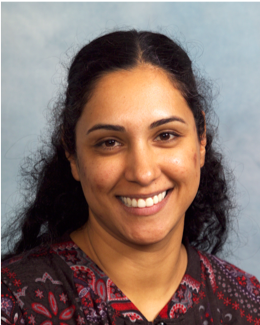Introducing our new curator
HGNC ·
Tel-Aviv beach, Israel
My name is Liora Vilmovsky and I’m a new Gene Nomenclature Advisor at the HUGO Gene Nomenclature Committee (HGNC) team at EMBL-EBI. My new role with the HGNC is focused on stabilising symbols for clinically relevant genes.

My career as a scientist has included researching a wide range of model organisms, biology fields and in different locations. My first project in science was in cytogenetics at the lab led by Prof. Esther Manor at the Ben-Gurion University of the Negev, Israel, while I was finishing my Bachelor degree. My research included identifying the chromosomal abnormalities in human blood cells of specific patients with a rare genetic syndrome.
I then started my Master’s degree at the Weizmann Institute of Science, Israel, and worked on two rotation studies within the institute. My first rotation was in the lab of Doron Lancet to identify genes involved in anosmia. I checked specific genomic regions to identify variants in 64 human patients. The second involved studying mouse neurons with Prof. Yitzhak Koch. My Master’s thesis was on my research on plant genetics at the lab of Prof. Yaval Eshed. Using genetic mapping, I successfully identified the mutated gene in Arabidopsis Thaliana responsible for a specific phenotype. My PhD with Prof. Jeffrey Gerst involved mRNA localization research in Saccharomyces cerevisiae. I developed a novel method to track endogenous mRNAs and proteins in living yeast cells, by using homogenous recombination genome editing. Using this method, I was able to identify the localization of different groups of hundreds of mRNAs and proteins localized to different structure/organelles including the peroxisome, ER, mitochondria and cell bud.
Around 10 years ago, after completing my PhD, I moved with my family to the UK to join Dr Sarah Teichmann for a postdoctoral position at the LMB MRC in Cambridge, and later at the Sanger Institute. I was fortunate enough to receive fellowships from EMBO and Marie Curie to perform my study on mouse immune cells. I used several methods of single cell mRNA sequencing (NGS) and analysis to identify the transcriptomics of ex-vivo and in-vitro T cells in different type 2 immunity mouse models. Specifically, I studied the role of Rora in T cell activation. I evaluated its expression in a range of tissues, T helper cell types, and infection models, analyzed in vitro CD4 data, with Rora overexpression, and did phenotyping of a CD4-Cre Rora knockout model under type 2 immune conditions. I then joined EMBL-EBI (with an EIPOD fellowship) to produce transcriptomics data from thousands of single cells of the mouse ventromedial hypothalamus, to characterize the cell subpopulations that compose this structure. I collaborated with lab members on two projects to assess the reliability of spike-in normalization in single cell analysis, and to check gene expression noise effect on embryonic mouse stem cells differentiation. This work was in collaboration with Dr John Marioni and Dr Cornelius Gross.
After taking a career break, I am excited to be coming back to work in science. I hope that my wide knowledge and experience will help me to contribute to the HGNC team in its mission to successfully stabilize the nomenclature of clinically relevant genes.
